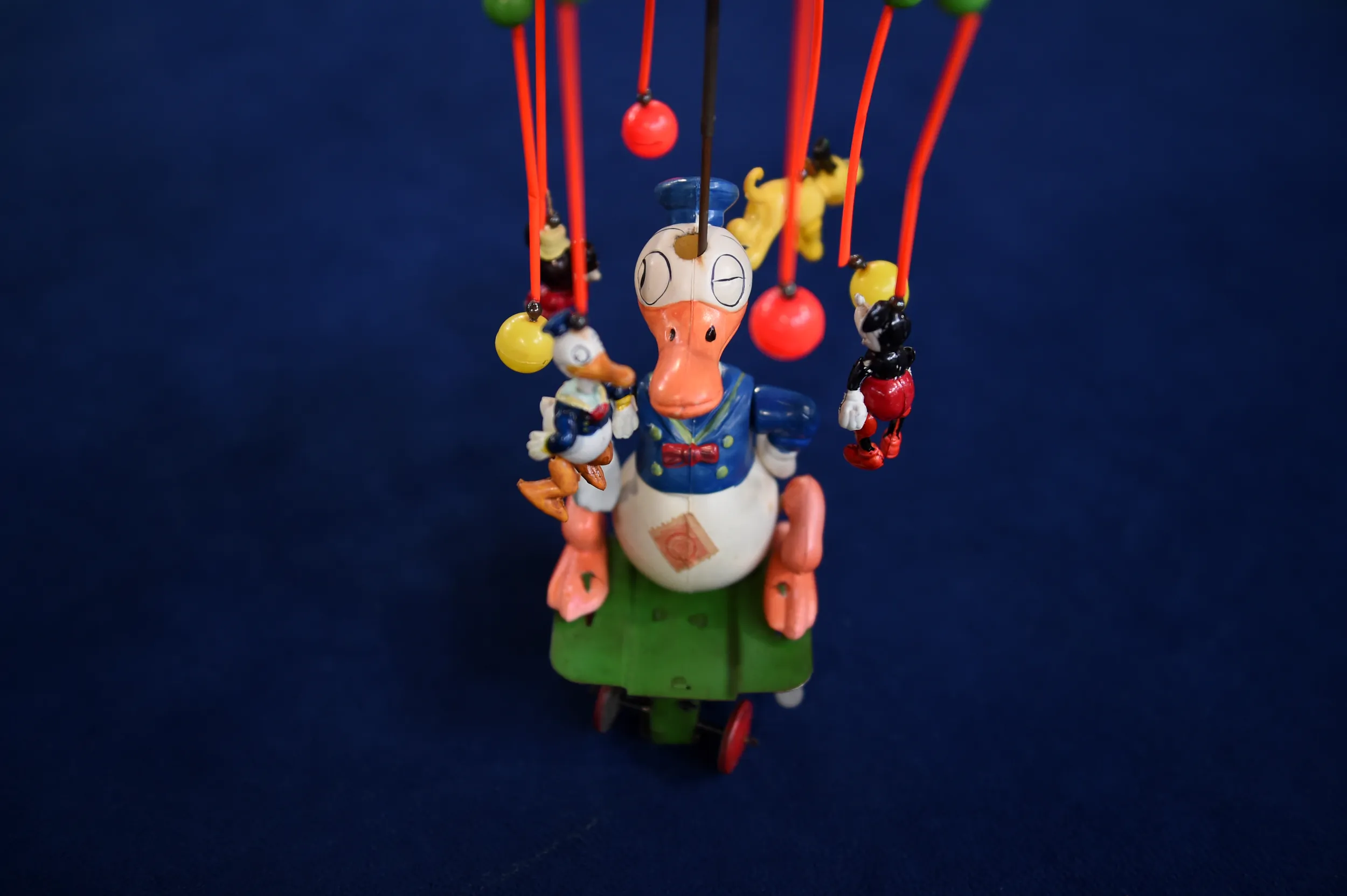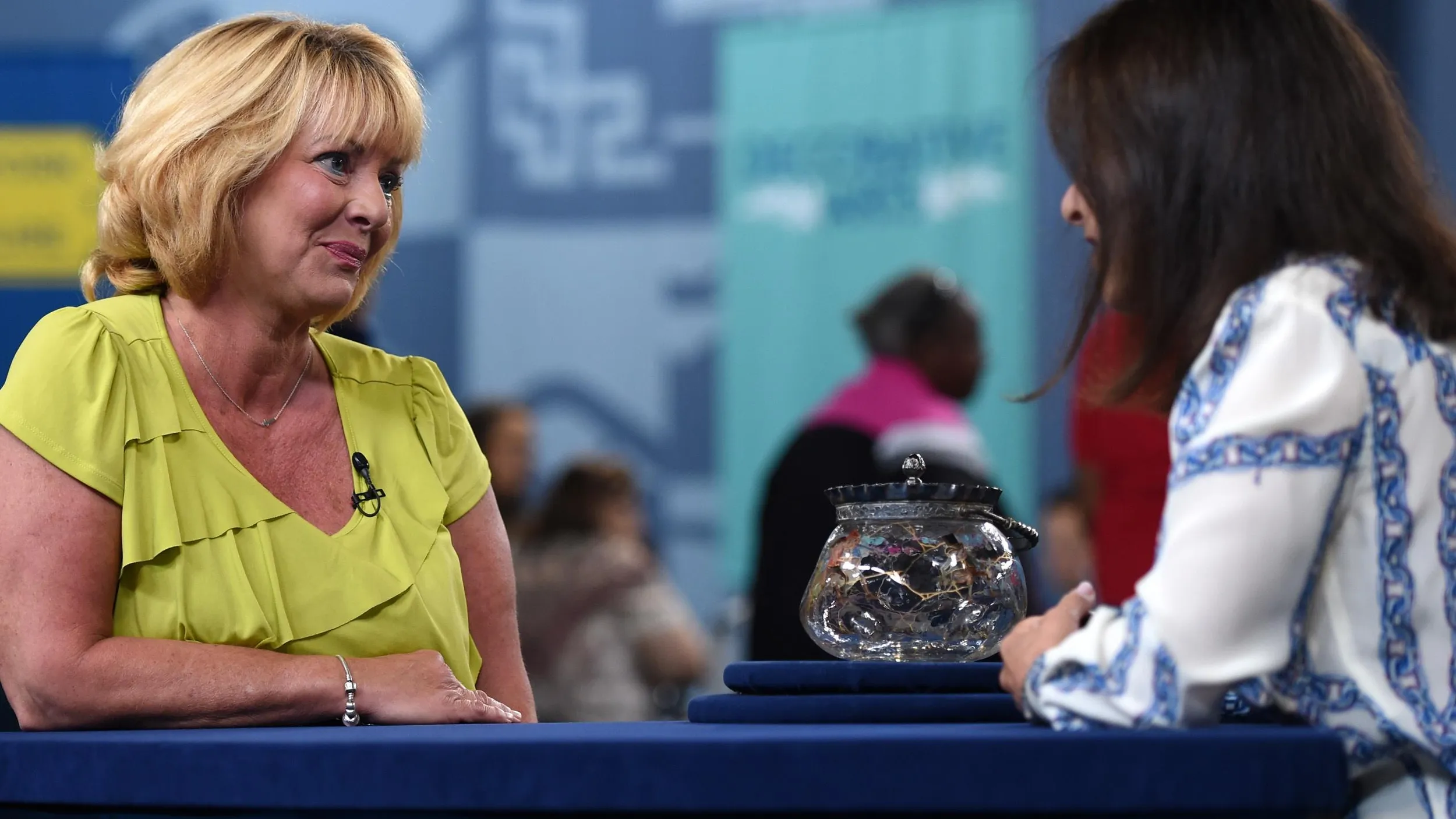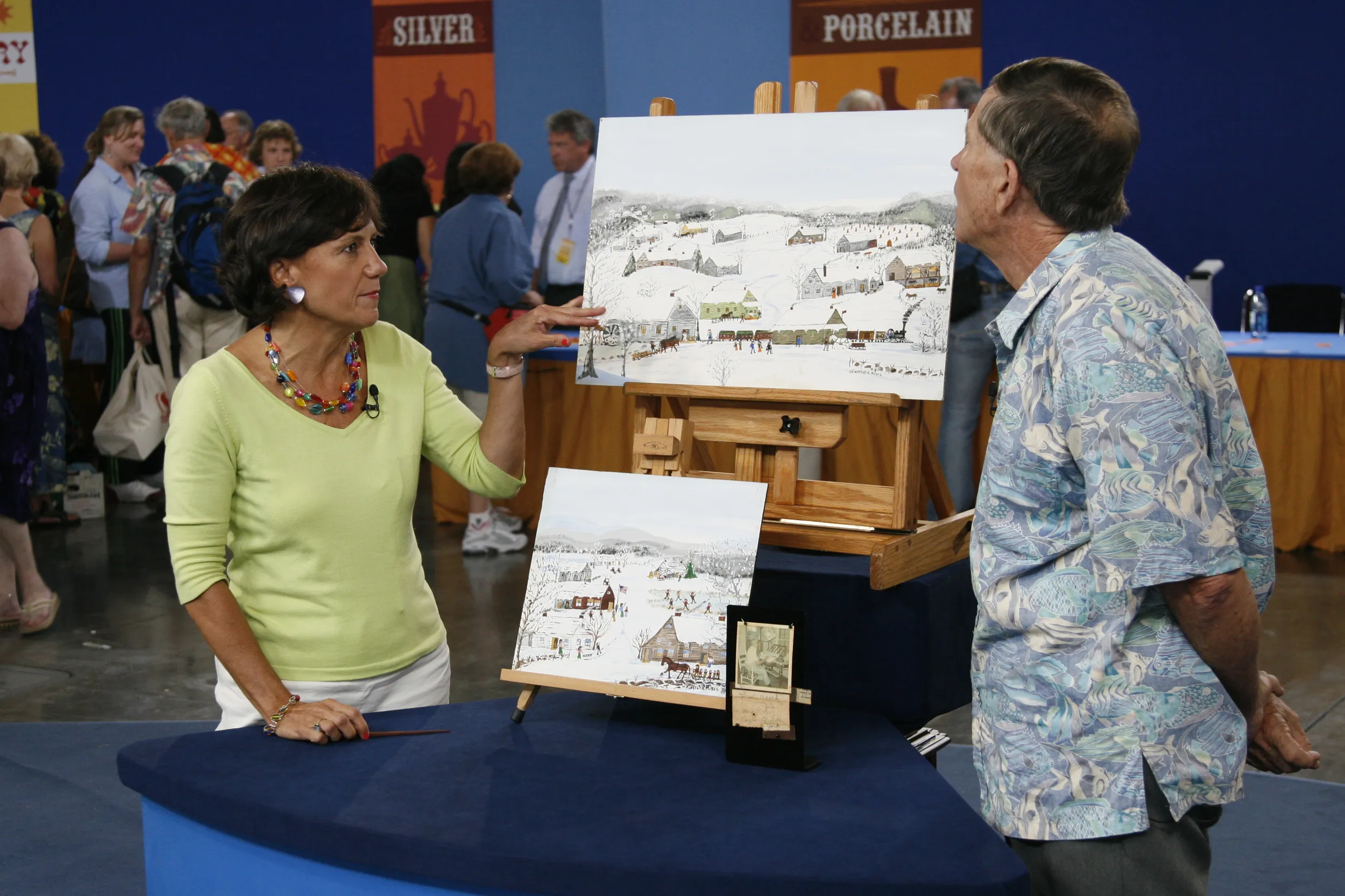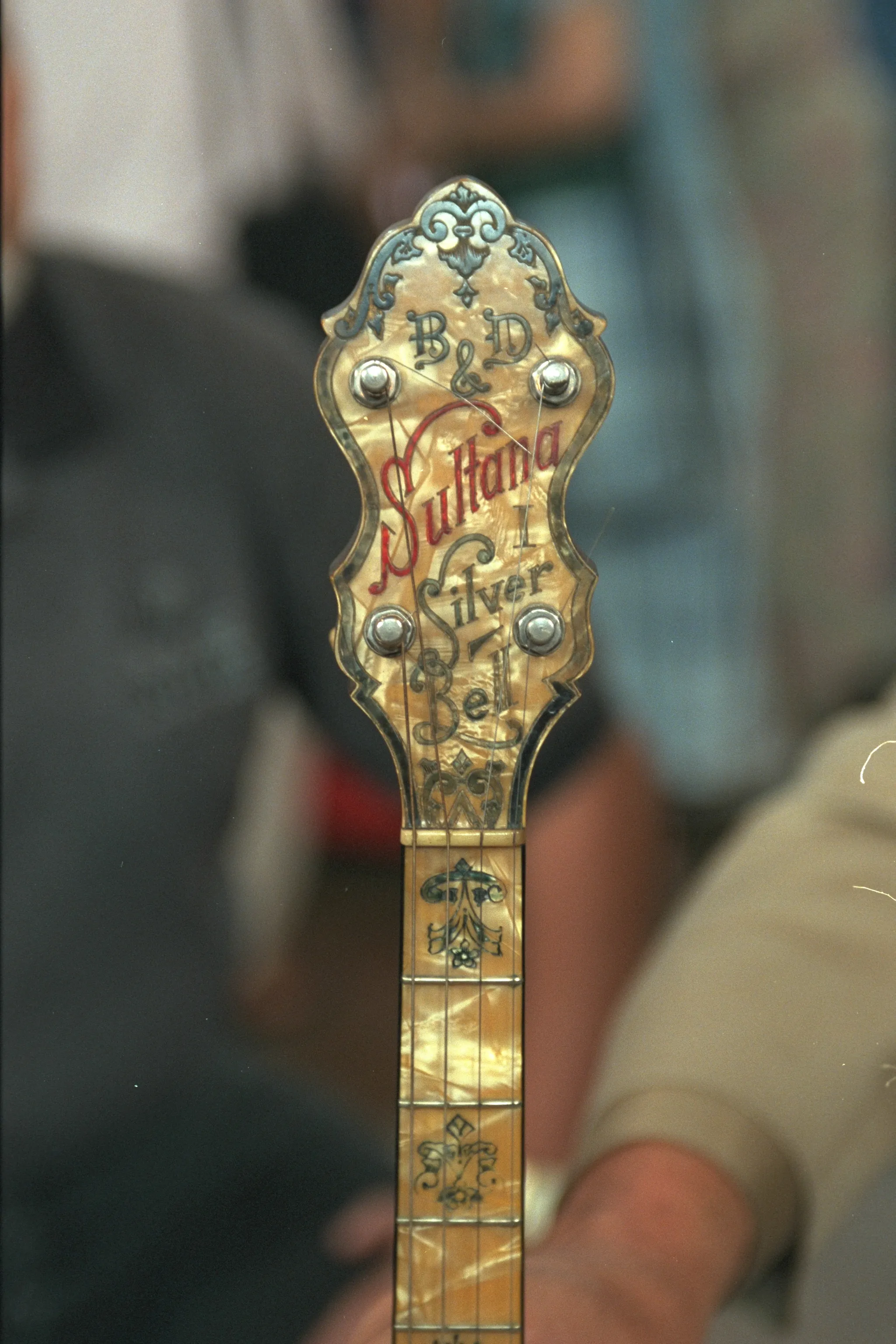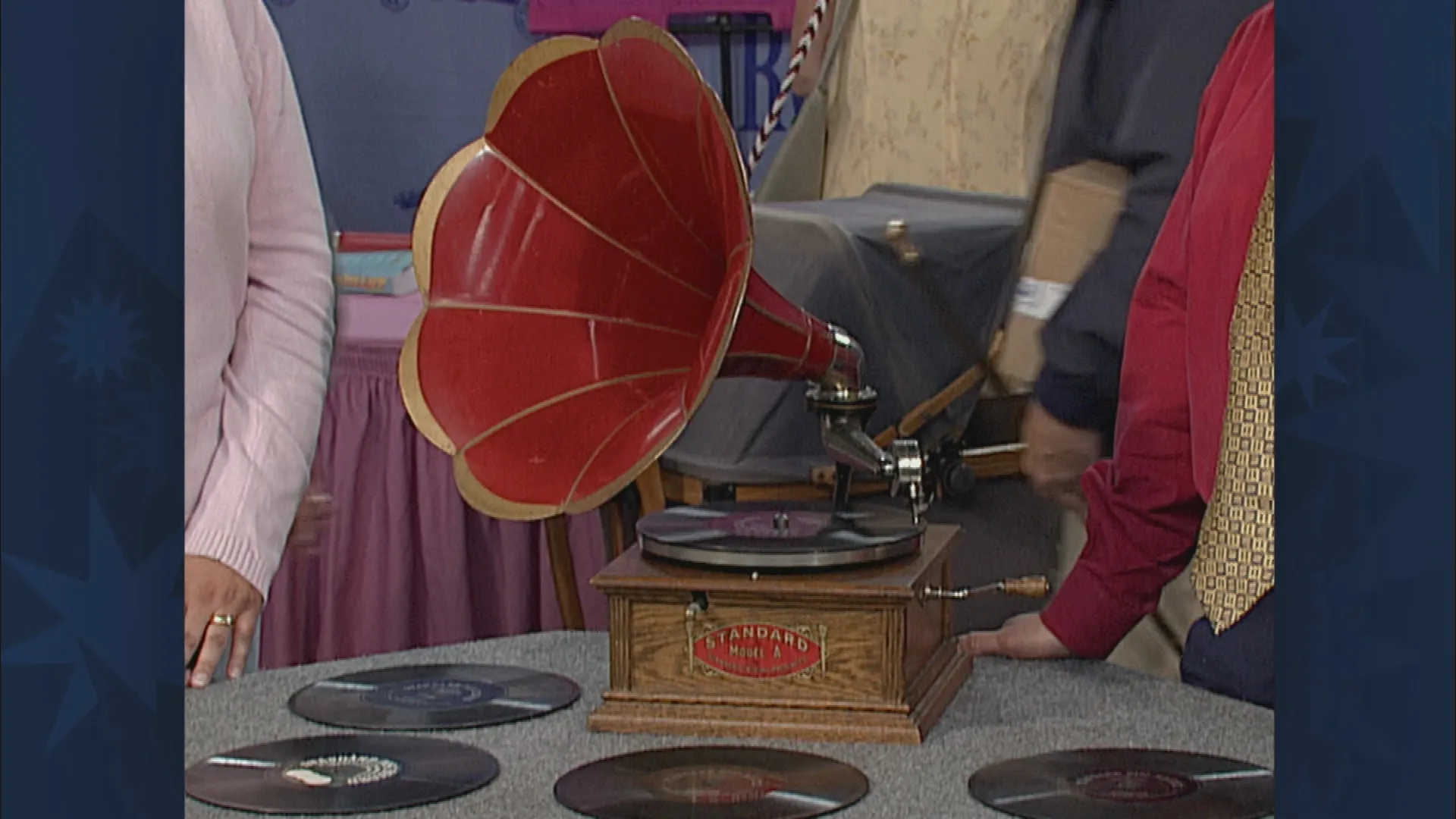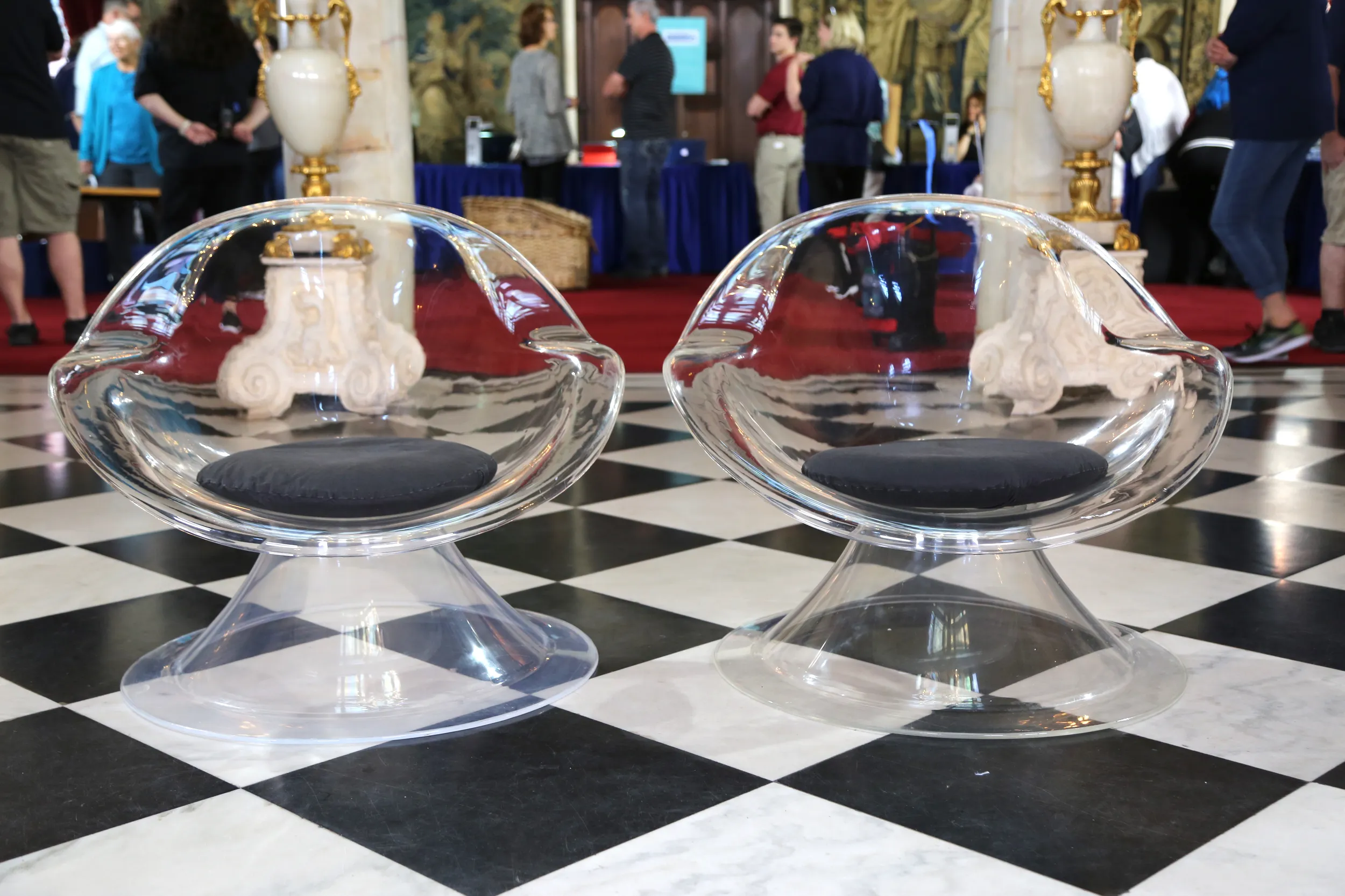GUEST: This was just a toy that my mother and father had had for a really long time. It was in a barn across the street from where my mother used to live. A bunch of barns and outhouses around this old house, and nobody really cared about the items in these anymore. And they searched around and picked up a few items out of these barns that were filled with other antique and vintage items, and they kind of just kept a few of them.
APPRAISER: So they just rummaged around.
GUEST: Yeah.
APPRAISER: And found this.
GUEST: Mm-hmm.
APPRAISER: For nothing.
GUEST: Yeah.
APPRAISER: Funny thing, I always say when somebody says they got something for nothing, there's one problem with that. When you sell it, you can never double your money.
GUEST: Well, that's true.
APPRAISER: Well, it's a great little toy, and, of course, I'm sure you've watched the ROADSHOW a little bit, and you know, of course, that we like the boxes. And we like especially when they're colorful boxes and when it's a colorful toy. Obviously, you know it's Donald Duck. Obviously, we know it's Disney. And what really sort of makes it special is that it's not only Disney, it includes all these various characters. Of course, the star is Donald. People who know Donald Duck now wouldn't recognize this guy. This is what we call "a long-bill Donald." That was the style in the 1930s. And, of course, we have all these wonderful little characters. It's sort of surreal when you think about it, because here's a little long-bill Donald twirling around with Pluto, Mickey, and Minnie, and, of course, this absolutely gorgeous, colorful original box. That, that is exquisite. One of the things that's interesting, I don't know whether you noticed, it's marked here "distributed by George Borgfeldt."
GUEST: Okay, I didn't notice that.
APPRAISER: George Borgfeldt was the most amazing man. He was responsible for bringing almost all the comic character toys that came into the United States in the 1930s. Mickey Mouse, Felix, all of them. Toonerville Trolley. But some of the best and rarest were these Disney toys that he brought in. And he brought them in from Germany and Japan, which is where this came from. One of the peculiar things is, see this little paper stamp?
GUEST: Uh-huh.
APPRAISER: This shows up, this is something to do with customs or import. And all the toys from Japan at that time had these little stickers. Why did they put it right on the belly? I don't know. It just, but it's what they did. This is such an amazing survivor because it's made out of celluloid. So many toys are lithograph tin. They survive, but this is such a fragile material, it breaks when you, when you squeeze it, it's... And then one that's just so complex as this. It's just really, really kind of exciting. Celluloid is an interesting material because it has color inherent when they make it. They can make it red. They can make it green. But when they make this, this is all white. The duck is white, but all this blue, the orange, the black is all hand-painted, so you can imagine, I mean, the detail work to produce this. See, here's Pluto. That's yellow celluloid, and they just paint his ears black, little red collar. Has great action. Let's see if we can get him to work.
GUEST: Okay.
APPRAISER: We'll wind him up. It's a little wind-up. Let's see if he's going, see if he goes. And what he does is, if he goes, he's going forward. And as he goes, we get this incredible carousel action. It's just extraordinary. There he goes. Watch out! Here he comes!
BOTH: Oh!
(laughs)
APPRAISER: So you got rare, colorful, unusual material, seldom surviving, and you've got this gorgeous original box. As far as value, I guess that's what you'd like to know.
GUEST: Sure, yeah.
APPRAISER: Well, at auction, I would have an auction estimate of between $2,000 and $2,500.
GUEST: Okay.
APPRAISER: So that would be kind of fun.
GUEST: Yeah.
APPRAISER: Not a bad find in a barn.
GUEST: Uh-huh.

